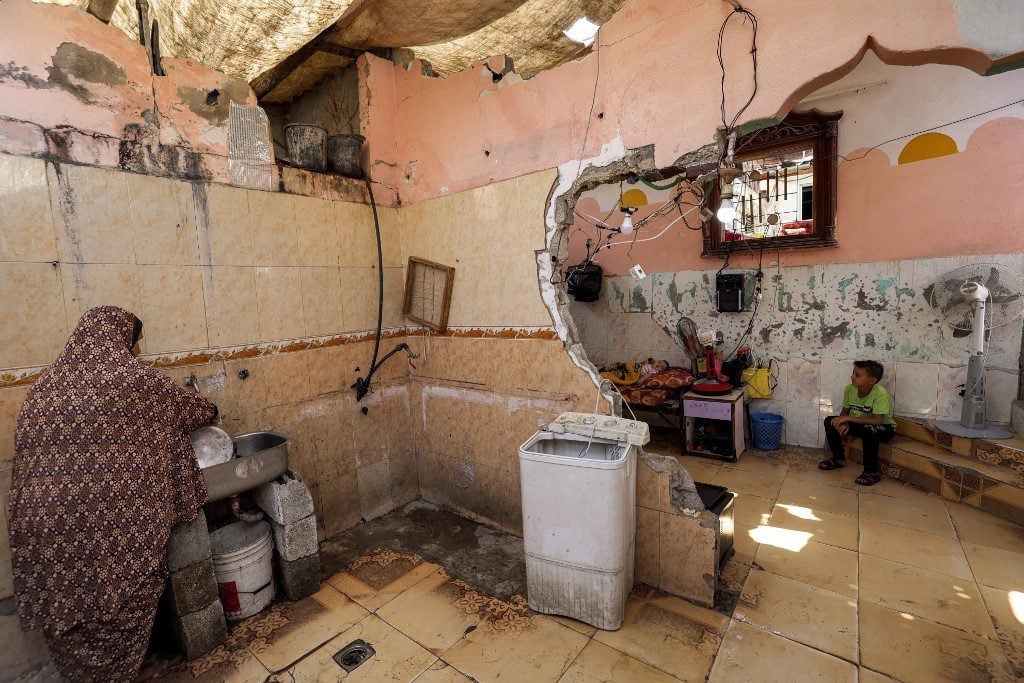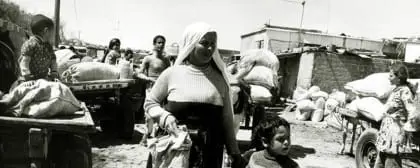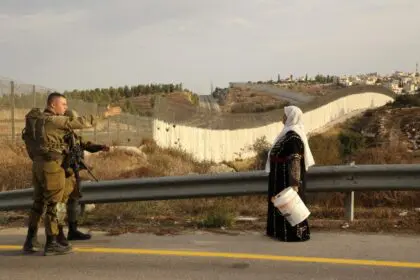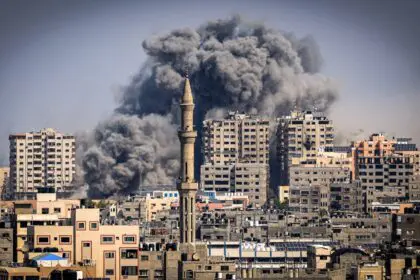Palestinian refugee camps in the Gaza Strip bear the brunt of Israeli wars more than any other area for several reasons.

Amjad Yaghi
Introduction
Palestinian refugee camps in the Gaza Strip bear the brunt of Israeli wars more than any other area for several reasons. The list of reasons includes the architectural identity of these camps, in addition to overpopulation and inadequate procedures to guarantee recovery from Israeli attacks.
The crisis these camps are experiencing becomes apparent every time Israel targets Palestinian factions’ leaders who reside there. For instance, the recent Israeli escalation last August caused 49 deaths and injured hundreds, half of whom were residents of these camps.
Between the fifth and seventh of last August, Israeli forces launched several attacks on al-Bureij, Jabalia and Rafah camps, aiming to assassinate prominent leaders of the Islamic Jihad Movement in Palestine.
One of these Israeli attacks claimed the lives of seven Palestinian civilians residing in the al-Shu’th neighbourhood in Rafah, which is densely populated with buildings constructed closely together. The attack also injured 35 civilians — 18 children and 12 women. Israel had attacked al-Shu’th to assassinate Khaled Mansour, a prominent leader of the Islamic Jihad Movement.
The Camps Dilemma
Eight Palestinian refugee camps were established in the Gaza Strip following the Nakba in 1948. The list of Gaza’s refugee camps includes Jabalia, al-Shati, Nuseirat, al-Bureij, Maghazi, Deir al-Balah, Khan Yunis and Rafah.
According to statistics confirmed by the Hamas Interior Ministry at the end of 2021, Gaza’s population reached more than 2.3 million, two-thirds of which are refugees. The Palestinian refugee count registered with the United Nations Relief and Works Agency for Palestine Refugees (UNRWA) exceeded 1,476,000 in May 2021, most of whom reside in the Gaza Strip’s camps.
These camps, the most deprived residential communities in the Strip, suffer from deteriorating infrastructure and stifling economic conditions. Though these camps were established as temporary camps for refugees, they turned into lively, populated areas crammed with multi-story buildings over time.
The Strip’s camps are considered among the world’s densest, with a population density of 55,000 people per square kilometre. In other words, any Israeli attack on these camps means a massive number of casualties, not to mention the destruction of the already deteriorating infrastructure.
The Jabalia camp – the largest of the Strip’s eight camps – has a population density of 81,400 per square kilometre. According to UNRWA records, over 113,990 registered refugees reside in a camp of no more than 1.4 square kilometres.
Gaza’s residents endure constant insecurity in times of war, according to Baraa al-Shaer, who resides in al-Shu’th in the Rafah camp. Baraa lost his friend Ismael Dweek in the recent Israeli attack. He refers to the camp’s huddled buildings and overpopulation, which prolonged the search for injured and missing people for hours.
The situation in the Strip’s camps worsens when the need arises to demolish unscathed buildings to rescue those stuck under the rubble. For example, with his consent, civil defence workers demolished Ashraf al-Qaisi’s house in the al-Shu’th neighbourhood to save people from under the debris.
Humanitarian activities to rescue people trapped under rubble are very hazardous due to the frail infrastructure in the camps. Ahmad Affanah fell victim after a wall collapsed on him in the Jabailia camp as he went to save one of his neighbours trapped under the wreckage of a house after the Israeli army bombarded the area on 7 August 2022.
Affanah’s brother told Fanack, “My brother was martyred because of the camp’s deteriorating infrastructure. Any Israeli attack means the destruction of infrastructure and more victims, especially because the camp’s buildings are built close to each other, exposing houses near the bombarded area to destruction.”
Gaza's Housing Problem

Al-Mezan Centre for Human Rights published a fact sheet in July 2019, stating that Gaza’s housing condition is worsening. This results from several factors, such as the increasing population density, decreasing number of houses, the siege and the Israeli army’s targeting of houses. To meet the housing needs that accompany the annual population increase, the Strip needs 14,000 additional units every year.
Over numerous years, a portion of Gaza’s population has moved out of the camps to different areas. Many of them took advantage of the empty settlements left by Israel since the Unilateral Disengagement from the Gaza Strip in 2005. Nevertheless, these areas did not have enough homes to fulfil the additional Gazan housing needs and reduce population density in the camps.
Besides Gaza City, the Strip does not have any central cities. Gaza City provides essential services and infrastructure for Gaza’s residents, such as public health facilities, government institutions, universities and workplaces. According to economic expert Gamal Abu-Aita, population growth and urban expansion led to stifling transport conditions between Gaza’s governorates, in addition to environmental pollution.
Abu-Aita says, “Camps were designed to be temporary housing areas for refugees. Between 1948 and 1975, camps’ houses were simple and in poor conditions. Then the residents of these camps developed housing units and infrastructure due to the increasing population. The Israeli wars and military operation piled on that fickle urban nature of the camps, especially since the Israeli bombardments destroyed major and vital parts of them.”
Gaza’s social traditions, too, exacerbate the worsening population density in the camps. Sons usually build additional floors on top of their family’s building. Baraa al-Shaer stressed to Fanack that leaving the camps is extremely difficult in this context, especially given the fact that Gazan society is based on proximity to extended families. The Strip’s land area of approximately 360 square kilometres also aggravates the population density.
Abu-Aita warns about the system of residential inheritance in Gaza’s camps, as it exacerbates the logistical crises already choking the camps’ residents. In addition, damages resulting from Israeli raids multiply due to houses’ proximity to one another. According to Abu-Aita, aquifers that have always enabled Gazans to live in the camps – especially those near the shore –are depleted as a result of the population density.
Slow Reconstruction and Faltering UNRWA Support
Refugees in Gaza do not expect significant future steps that would solve their problems in the camps. Those affected by the Israeli wars also suffer from the stalled reconstruction of their houses, especially victims of the 11-day Israeli war in May 2021. At the UNRWA headquarters in the Strip, these victims protested the delayed resolution of the reconstruction process.
Coincidentally, Naji Sarhan, undersecretary of the Ministry of Public Works and Housing in Gaza, emphasised that the reconstruction process has been exceptionally slow since this Israeli attack. Only 200 units of the 1700 units damaged during the attack were rebuilt.
Simultaneously, UNRWA is suffering a severe budgetary shortage, amounting to $100 million, according to officials. The main culprit is a decline in international financial support resulting from diminishing overall support for the organisation. The UNRWA allocates 38 per cent of its budget to the Gaza Strip.
The UNRWA Commissioner-General, Philippe Lazzarini, warned about the unprecedented decline in Arab countries’ financial support. According to Lazzarini’s speech at the meeting of Arab foreign ministers in Cairo in early September 2022, Arab support did not exceed 3 per cent of UNRWA’s 2021 budget.
Three and a half years after the former US President’s decision to cancel it, the US has resumed its financial support for UNRWA to carry out its activities related to the employment of Palestinian refugees and the reconstruction of destroyed houses. However, Washington’s move did not solve the problem. As many supporting countries have reduced their aid to the international organisation over the past years, the suffering of Gaza’s camps’ residents will continue until God knows when.




